Sam Streva was the mentor of Jack Dragna, the first modern American Mafia boss of Los Angeles.
If you’ve seen one photo of Jack Dragna, the Los Angeles Mafia boss of the 1940s and ‘50s, it’s probably this one:
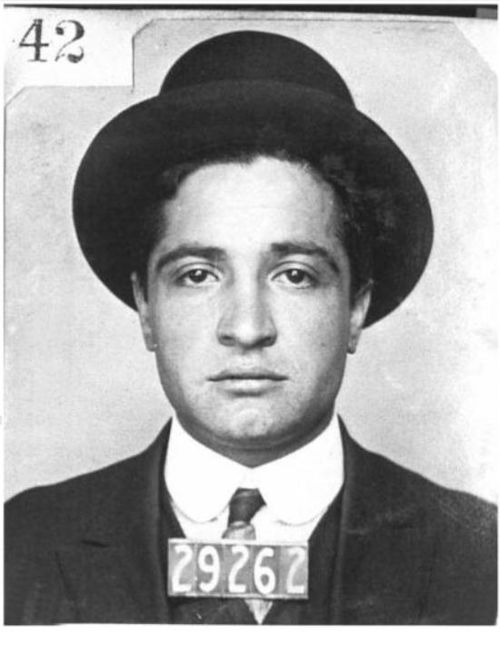
What you may not have seen is where this photo came from:
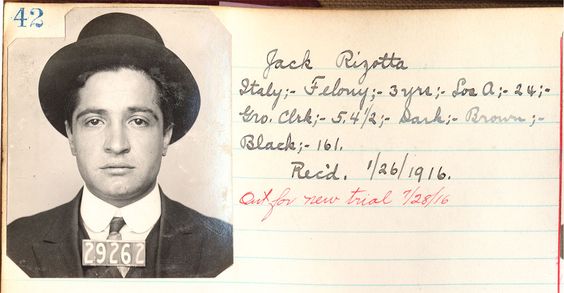
This is Jack Dragna’s booking photo, after being arrested for extortion. Local news at the time reported that a Black Hand organization led by Sam Streva and including Jack Rizzotto and Ben Streva, had extorted a wealthy rancher, Dominico Lauricella, and threatened to kill his family. Lauricella went to the police, who arrested Jack Dragna, operating under the alias of Rizzotto, and Sam Streva, identified by police as the gang’s ringleader. A third extortionist, Ben Streva, is identified as Sam’s brother.
Jack Dragna was born Ignacio Dragna in 1891 in Corleone. He emigrated at least twice, first as a child with his parents and siblings. The family stayed in New York City with Jack’s cousin, Antonino Rizzotto, who was also his future father-in-law. (Jack and his wife, Francesca, were second cousins.) The family went back to Corleone, but Jack returned as young man, in the spring of 1914, joining his brother Tom, born Gaetano, who was already living in East Harlem. By the end of 1916, Jack was in San Quentin Prison, and Tom, Jack’s future consigliere, was getting married in New York. By 1920, Jack was out of prison, and his brother’s family was also living in Los Angeles.
Dragna goes down in Mafia history as the first boss of Los Angeles, because he was the one who made peace with the other Mafia families who were organized under Luciano’s Commission. But Dragna was not the first Sicilian organized criminal operating in Los Angeles. He inherited the interests of Joseph Ardizzone—and was suspected in the former boss’ disappearance. Even Ardizzone was not the first. Before Dragna, Bugsy Siegel, and Las Vegas, before the Commission and Prohibition, there were the Ardizzone and Matranga families of Piana dei Greci fighting for dominance of the new market, in the port of San Pedro, south of Los Angeles. And even at this early point in the story, it’s not quite the beginning, because a different Matranga family were already an established power in New Orleans, where it is currently believed, the first Mafia in America was at work within a decade of the Civil War’s end.
Some of the earliest Sicilian immigrants in New Orleans were not precisely from Sicily, but from a tiny island north of Palermo called Ustica. The musician Louis Prima traces his ancestry to Ustica: his mother was born there. Today, about 1,300 people live in Ustica, and are connected to Palermo by a daily ferry. But before 1763, no one lived there, due to the continuous threat from North African pirates.
Piracy had been an ongoing concern for centuries, dooming earlier attempts to settle the island. In the early 1700s, Austrians attempted to appease pirates and reduce raids on the slow moving grain ships leaving Sicily, by drawing up commercial treaties with the governments of the cities from which they hailed: Tunis, Tripoli, and Algiers.
In 1734, Spain recaptured Sicily from Austria, and the new king, Ferdinand IV, colonized Ustica with people from Lipari, another island in the same sea north of Sicily, in another effort to deter piracy. One of those pioneering families were the Lauricella, who would venture forth once more to become some of the earliest Italian emigrants to New Orleans.
Dominick Lauricella was born in Ustica in 1858 and emigrated around 1871, when he was still a teenager. Some of his siblings settled in New Orleans, and had families there. One was his brother, Bartolo, a fruit dealer. Other members of the Lauricella family went west: one of his nieces died in San Francisco in 1918.
By 1900, Dominick was married and living in El Paso, Texas, where he owned a modest ranch with a few horses, one head of cattle, and a grocery. Ten years later, he was independently wealthy, and living in Long Beach, California, with his wife and children.
Beginning around 1905, the most prominent Italian gang in Los Angeles were the Matranga family, whose legitimate business was also in fruit vending. (It’s claimed the Matrangas of Los Angeles were related to the founder of the Mafia in New Orleans, Charles Matranga. No evidence has been forthcoming. (Updated: JC, 13 April 2020) In Los Angeles, the Matrangas were engaged in a protracted feud with the Ardizzone/Cuccia gang.
Sam Streva is called a mentor to Jack Dragna, the future boss of Los Angeles. He first appears in a 1902 Los Angeles city directory as a barber living in the Sicilian colony of San Pedro, a port town south of the city center. His first son, named Vincent, was born that year. By the 1910 census, Salvatore, also called Sam, was a fruit merchant. In 1915, when his arrest for extortion was being covered in the local news, Streva was named as the ringleader of the San Pedro gang extorting Dominico Lauricella.
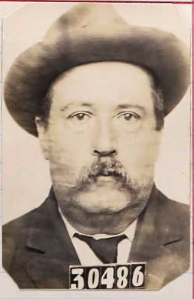
Sam Streva was tried in 1916, and sentenced to three years. “S. S. Strever” was 54 years old when he entered San Quentin in 1917, after being prosecuted for extortion in Los Angeles. While serving his sentence, he worked once again as a barber. The extortionist is a match for an 1863 baptismal record for Salvatore Streva, born in Corleone, whose father was named Vincenzo, the same as Salvatore’s older son. But I have not yet found his marriage to Anna Bonanno, whose surname is known from their children’s death records, either of their records of immigration, or another vital record that would confirm the baptismal record is Sam’s.
There are at least two men, each known by both of these names, Salvatore and Sam Streva, living in Los Angeles around the time Lauricella was being extorted by what he called “the Camorra.” They were both fruit merchants in 1910 and, if I have correctly identified the San Quentin inmate, the two men are second cousins from Corleone. Although stories of Sam Streva, the gangster, have conflated elements of both men’s lives, they are definitely two different people. The Sam Streva who did not go to prison in 1917 is twenty-two years younger, and has his own close ties to the Mafia.
The younger man was born Salvatore Streva in 1885 in Corleone, six years before Jack Dragna. He emigrated with his father and siblings in 1896, heading first to New Orleans. His niece, Angelina Oliveri, is married to Gaetano Reina, the Morello associate and gang leader in the Bronx. Sam is also the second cousin of Paolino Streva, the capo under whom Giuseppe Morello worked as a cattle thief in Corleone.
In 1910 Sam lived on Channing Street in Los Angeles with his mother and extended family, and ran a grocery store. The future extortionist was already married to Anna, with two sons by this time. In 1915, the younger man married for the first time, to Francesca Profita, a New York native whose family is also from Corleone. Their marriage record confirms his parents’ names from his baptismal record.
There’s a third Salvatore Streva of note, born out of wedlock in 1884 in Corleone. He is the first cousin, once removed, of the extortionist of the same name, and second cousin, once removed, of the rancher born in 1885. The year before his parents married, legitimizing his birth, he emigrated to New York, joining an uncle there.
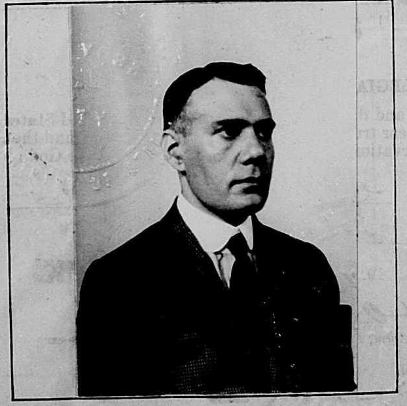
Salvatore was known in New York as Charles Salvatore Streva. He became naturalized in 1914, and made the first of two known trips to Havana, Cuba, in the spring of 1916. In the decade before Prohibition, Cuba was already a vice destination. Meyer Lansky lived in a hotel suite in Havana and worked as a consultant to casinos and a racetrack there. There was a small Italian community in Cuba. I have not found any evidence of Corleonesi who lived there, at any time. (If I did, it would be from a tertiary source, since records of Italian passengers to Cuba are unavailable to me.)
Charles documented his 1916 trip in 1920, the first year of Prohibition, when he applied for a passport to make another trip to Cuba on “personal business.” A surveyor in 1909, he was reportedly a clerk in 1920, living in the Italian neighborhood of East Harlem. Later, he moved to College Point, in Queens. He made at least one trip to Italy, returning in 1930. At his death in 1936, he was called an engineer.
A fourth Salvatore Streva is close in age to the others, born in Corleone, a close relation to the other three, and like his same-name cousins, an immigrant to the American South, and a merchant. This man, born in 1870, is Charles’ second cousin, once removed; a second cousin of the extortionist born in 1863; and first cousin of the rancher. He immigrated through New Orleans as a young man with his parents and siblings, and married Giuseppa Minitella in St. Mary Parish, Louisiana, where there is a community of immigrants from Corleone. He and his wife lived in Patterson and had nine children. Sam owned a grocery store. The whole family moved to Houston, Texas, by 1930. Sam died in 1947.
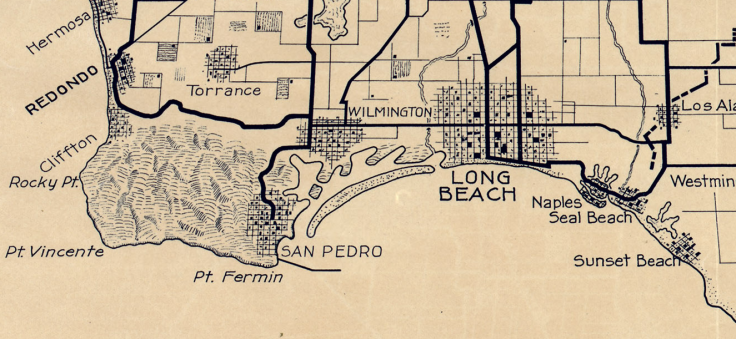

In Los Angeles Sam (b. 1885), the future rancher, who lived on Channing Street, and his wife, Francesca, had three children. In 1917, while the oldest Sam Streva (b. 1863) was still at San Quentin, Channing Street Sam, now a fruit merchant, declared his intent to petition for citizenship. He petitioned in 1920 and his petition was granted in 1921.
When Jack Dragna was arrested and imprisoned for extortion, he was known by the alias “Jack Rizotta”, his cousin’s surname: Rizzotto. Ben Streva, who is implicated in the crime along with Jack and Sam, is called Sam’s brother. There is no one by this name who was born in Corleone. I believe “Ben Streva” is Benigno Rizzotto. Bennie Rizzotto was born in Corleone in 1896, emigrated as an infant, and married in 1917 in Manhattan. He appears in Los Angeles in the 1920 census. Ben and Jack Dragna are second cousins and were future brothers-in-law in 1915. Jack Dragna’s family stayed with Benigno’s in NYC when they were children, in 1898, and the Dragnas first emigrated. In 1922, after being released from prison, Jack married Ben’s sister, Francesca, in Los Angeles.
Paroled in 1918 from San Quentin, “Strever” was discharged in 1919. In 1920, Sam Streva and his two sons, the younger twelve years old, are all listed in the city directory, in San Pedro. The 1920 census shows Sam working in a lumber yard. He died in 1928, at age 65.
In 1923, Sam Streva (b. 1885) appears in the San Fernando city directory on Devonshire. In subsequent years he is identified as a rancher at 16518 Devonshire St, and his wife’s name also appears in the voter rolls. They’re registered Democrats in 1924. In 1928, according to one unverified source, large scale wine production was discovered and seized from Sam Streva’s home and he was fined $350 in Van Nuys Municipal Court. This is the only report I have found so far of the younger Streva running afoul of the law. Sometime between 1950 and 1958, the Streva family all switched from Democrat to Republican. Sam was still registered at the Devonshire St address in 1960. He died in 1973.
Sources
“Fears plot, makes home fortress,” 25 November 1915. Oakland Tribune. P. 5.
“Makes Fortress of Home in Fear of Black Hand Death Plot.” 23 November 1915. Los Angeles Herald. P. 1.
Smith, Denis Mack. History of Sicily: Modern Sicily After 1713. Dorset Press (1988).
[Updated to remove an incorrect reference regarding Ross Streva. 6 June 2021. JC]
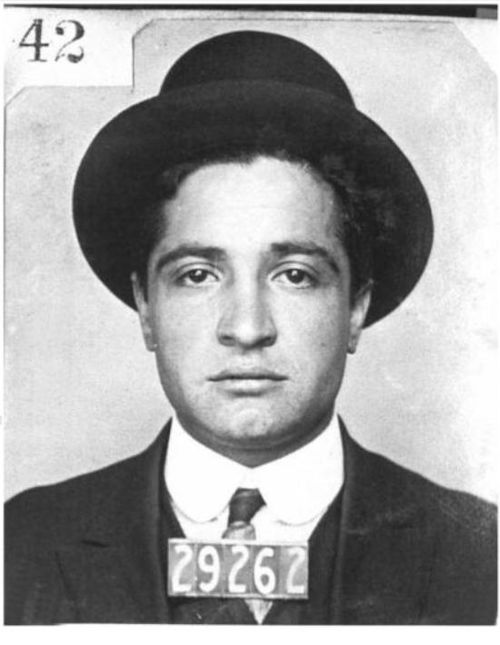
You forgot to mention the Barnett BAff and Tombs Prison aspect of Jack’s life. Great article! Also on Uncle Bennie, he ran the Club Alabam and a few other establishments.
LikeLike
Got to save something for your book! 😀
LikeLike